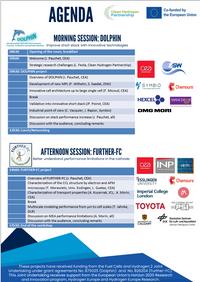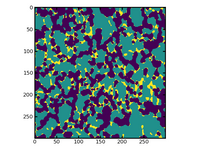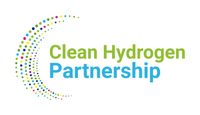The final objective of the EU-Project FURTHER-FC is to support and promote the manufacturing and deployment of fuel cell vehicles, through the specification and design of better performing and more durable Membrane Electrode Assembly (MEA) as core and critical component for the electrochemical conversion in Polymer Electrolyte Fuel Cells (PEMFCs).
Announcements
- Newsletter #6 is available with a project summary! Please have a look!
- FURTHER-FC invited to the project final workshop, You can download the flyer from the specific page (final workshop). Presentations will be availible for download soon.
- FURTHER-FC will have two presentations at 244th ECS Meeting in Gothenburg, Sweden, on Sunday, 8 October 2023 11:40 by Thomas Jahnke (DLR) Room F4 I01A-1709 A Multiscale Modeling Approach to Identify and Quantify the Transport Limitations in Proton Exchange Membrane Fuel Cells and on Thursday 12 October by Arnaud Morin: I01A-1788 - Structure, Ionomer and Water Distribution in Catalyst Layer of Proton Exchange Membrane Fuel Cell
- FURTHER-FC was pleased to present some of the work at the FDFC in Ulm hosted by ZSW. Jens Mitzel presented the "Impact of cell degradation on transport and structural properties of the cathodic catalyst layer in a PEMFC", Konrad Gülicher presented a "Lattice Boltzmann Model for Oxygen Reduction Reaction at Platinum Surface and Gas Diffusion in Pore Space and Ionomer for PEM Fuel Cell" and Tobias Morawietz had a poster presentation about structural and conductive AFM investigation of HOPI ionomer.
- Insights into the effective diffusion properties of MPL+GDL in PEMFC are discovered in our latest #FURTHER-FC publication:Computation of oxygen diffusion properties of the gas diffusion medium-microporous layer assembly from the combination of X-ray microtomography and focused ion beam three dimensional digital images by M. Ahmed-Maloum, T. David, L. Guetaz, P. Duru, J. Pauchet, M. Quintard and M. Prat;You can read it here:https://www.sciencedirect.com/science/article/pii/S0378775323001106#fuelcells #hydrogen #europe
- FURTHER-FC has received an extension of 6 months!
- First FURTHER-FC workshop
Our first public workshop was held on July 6, 2022 (09:00-17:00, CEST) at the German Aerospace Center in Stuttgart, Germany with about 140 registered participants (face-to-face and online).
We had top-class international speakers (Many thanks for presenting your research!) and a great audience.
- Distribution of ionomer and carbon phase
3D digital images of cathode catalyst layer (CCL) microstructure obtained via FIB-SEM allow to differentiate the pore space from the solid phase but do not allow to identify directly the ionomer and the carbon phase. As illustrated in the figure, partitioning algorithms are developed to distribute the ionomer and the carbon phase in the images. This is a necessary step for computing CCL transport properties from numerical simulations.
Fig. 2D image of cathode catalyst layer microstructure (dimensions are expressed in voxel size unit (5 nm)). Pore space in light blue. Tentative partitioning of solid phase between the carbon particles (violet) and ionomer (yellow)
FURTHER-FC started on 01.01.2020
The consortium is pleased to announce that the EU-funded project started on January 1st, 2020.
About Further-FC
PEMFC is the promising technology for automotive applications with a large deployment horizon by 2030. However, in view of extending their use to a broad range of customers, progress have to be done in terms of cost, performance and durability.
The FURTHER-FC project aims at understanding performance limitations due to the coupling between electrochemical and transport issues in the Cathode Catalyst Layer (CCL) which is the main bottleneck for future PEMFC







